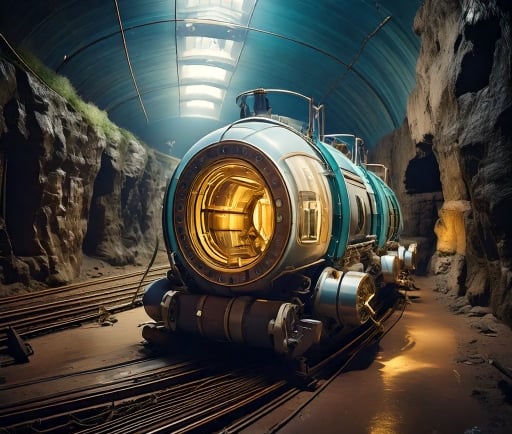Boarding the Tartarian Pneumatic Transportation: A Revolutionary Network of Tunnels


The Emergence of Tartarian Pneumatic Transportation Capsules
In the annals of transportation technology, the Tartarian pneumatic transportation capsule stands out as a fascinating innovation. Designed to operate within an extensive network of tunnels, these capsules rely on air pressure to propel them through subterranean pipelines, effectively revolutionizing how goods and passengers are transported. The concept marries speed with efficiency, promising a new paradigm in urban mobility and logistical networks.
A Closer Look at the Tunneling Infrastructure
The foundation of the Tartarian transportation system is its network of tunnels, ingeniously engineered to accommodate the pneumatic capsules. These tunnels are strategically constructed underground, reducing surface traffic congestion and minimizing environmental impact. By utilizing a combination of advanced materials and engineering techniques, the tunnels enhance safety and durability while allowing for seamless integration with existing urban landscapes.
Benefits and Implications of Pneumatic Transport
The implications of implementing a Tartarian pneumatic transportation system are substantial. Firstly, this mode of transport promises significantly reduced transit times, as capsules can travel rapidly through the low-resistance environment of a tunnel. Additionally, this system is poised to alleviate urban traffic woes by decreasing the reliance on surface vehicles, thus leading to lower emissions.
Moreover, the pneumatic transportation network could reduce wear and tear on traditional transportation infrastructure, prolonging the lifespan of roads and highways. The multifunctionality of the system allows it to cater not just to passenger transport but also to freight logistics, presenting a dual benefit to urban planners and businesses alike.
In summary, the Tartarian pneumatic transportation capsule represents a striking advancement in the field of transportation technology. With a robust underground network designed for efficiency and speed, this innovative system could redefine mobility in urban spaces. By embracing such revolutionary technologies, cities could pave the way toward a more sustainable and efficient future, making life easier for residents and contributing to the overall wellbeing of our planet.
